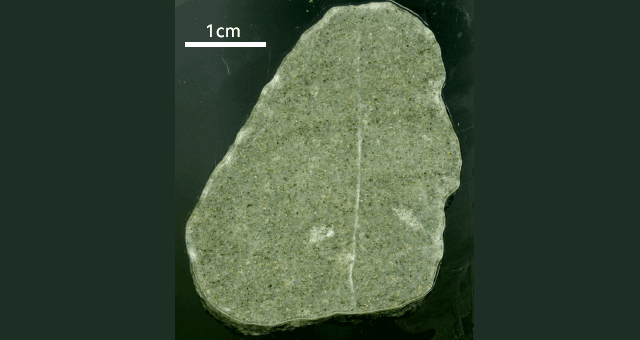Registriert: Fr 18. Dez 2020, 09:24
Beiträge: 206
|
 It is an unassuming, green and over 4 cm long stone, and this small piece of sandstone remains an important clue for all of our future.It has disappeared from deep ocean mud, far off the coast of western Antarctica, in modern times.Scientists who found it said it shouldn't really be there.The so-called drop stone, ice debrisIt was scraped off the White Continent by a glacier, having a certain distance in this flowing ice, then sent off and dumped offshore by an iceberg.The amazing thing about this pebble is that researchers were able to tell where it came from.With the use of techniques The latest "geographic fingerprints", they have made great confidence that it is from the Ellsworth Mountains - about 1,300 km from where the rock was pulled from the Amundsen seafloor by. Drilling boat It is an unassuming, green and over 4 cm long stone, and this small piece of sandstone remains an important clue for all of our future.It has disappeared from deep ocean mud, far off the coast of western Antarctica, in modern times.Scientists who found it said it shouldn't really be there.The so-called drop stone, ice debrisIt was scraped off the White Continent by a glacier, having a certain distance in this flowing ice, then sent off and dumped offshore by an iceberg.The amazing thing about this pebble is that researchers were able to tell where it came from.With the use of techniques The latest "geographic fingerprints", they have made great confidence that it is from the Ellsworth Mountains - about 1,300 km from where the rock was pulled from the Amundsen seafloor by. Drilling boat
The mystery is that the Ellsworths - the slotxo highest in Antarctica - are in the inner part of the continent, and it is highly unlikely that such rocks will survive being transported under the ice to reach the coast for Shipment In large blocks freeze floats on water.In our view of these observations, the material will not withstand a large amount of transport, with deposition and repetition at various stages of the cycle, and, moreover, it may be unable to withstand the transport." Much Interaction between the ice sheet and the rocky floor, it will be destroyed and separated. Christine Sidoway, Professor of Geology at the College of Colorado, USA.So how does it travel so far? The answer is in the age of deposits collected by the Joides Resolution vessel in the International Ocean Discovery Program (IODP) "Expedition 379" in 2019.They're in the middle of the pliocene in the geologists' timeline. That was about three million years ago.
The mid-Pliocene period is an interesting time in world history due to its strong resonance today. It was the last time the atmosphere had the same concentration of carbon dioxide greenhouse gas - more than 400 parts per million.At the time, temperatures were significantly warmer, perhaps 2-3 degrees worldwide, and sea levels were rising as well, perhaps 10-20 meters above the surface of the modern ocean.And this is where our tiny green sandstone comes into the story.The mid-pliocene sea level indicates the western Antarctic ice sheet, or at least its significant portion has melted away, and there is a large open sea.This is hard to imagine when you look at today's Antarctic map. We view the ice as a continuous solid mass. But remove the ice and you're left. But the great islands, which are the big islands Explain how pebbles can travel long distances.
The glacier at the Ellsworth Mountains picked it up and produced a local iceberg to float it over a thousand kilometers across the open sea to drop it at the Expedition 379 location.Our findings confirm that the ice sheet can disappear fairly quickly and can also easily regenerate itself," explains Prof Siddoway.We read from very detailed records that we tried to refine - the ice sheet had collapsed to a great extent, especially in the central Pliocene.This is a period of time if we read the current literature from climate modelers that we may be getting into the pliocene climate is what we expect to enter, and if the heat continues, it will continue to grow." Continued at the rate that is now us. May be there. "No one expected that the West Antarctic Ice Sheet could collapse anytime soon. But small rocks of sand are a warning.Scientists believe we can eventually create new conditions if we can't cope with the climate crisis.
|
|